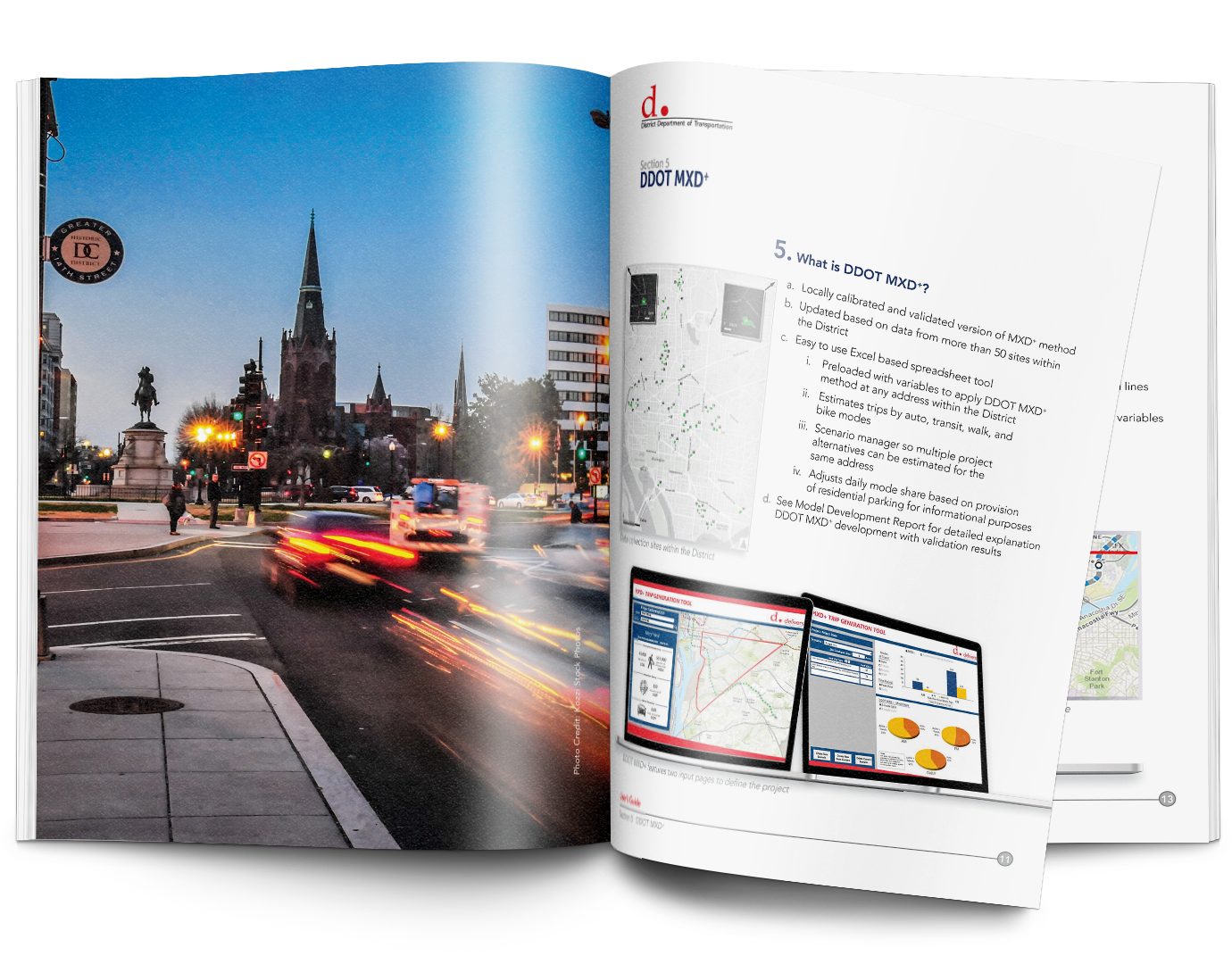
MXD+ uses research from two major studies to more accurately predict vehicle trip generation from mixed-use development compared to traditional methods, such as unadjusted Institute of Transportation Engineers (ITE) trip generation rates. MXD+ eliminates a common bias against mixed-use projects by accounting for internal trip-making associated with complementary on-site land uses, considering how the surrounding environment may result in walking, biking, and taking transit to access the site.
Mixed-use development (or MXD) is a generic term for land use strategies.
In 2010, Fehr & Peers partnered with the US EPA to create a MXD tool.
Since then, Fehr & Peers continues to advance MXD+ to be the best in the industry.
Customizable for Clients
Fehr & Peers can create a locally calibrated version of this tool for you and your community.
Building on ITE Trip Rates
MXD+ integrates traditional methods with modern knowledge and current practices.
7-Variable Sensitivity
MXD+ has enhanced sensitivity for more accurate trip generation estimates than traditional methods alone.
A Full Accounting
To assist with California SB 743 implementation, MXD+ provides a full accounting of on-site and surrounding effects.
The Value of MXD+
Mixed-use development is widely considered an effective means of reducing traffic impacts. Ranking in the EPA Top 10 Smart Growth Planning Principles, mixing a variety of land uses is generally considered a strategy that optimizes use of transportation infrastructure, improves community quality-of-life, and reduces vehicle travel and related concerns over global warming. Therefore, it achieves higher levels of support from planners, policy makers, and elected officials and developers.
Mixed-use developments come in a wide range of sizes, mixes, and configurations. As one common characteristic, such development can reduce off-site traffic impacts by satisfying travel needs within the development site and reducing external travel. However, traffic engineers are ill-equipped to quantify these benefits in traffic planning and impact analysis. Techniques available from ITE and standard travel modeling do not accurately measure the potential trip reduction achievable from a full range of development concepts. Fehr & Peers developed a more accurate and robust method of estimating the traffic generation from mixed-use development projects. The approach relies on built environment variables known as the “D’s” to measure the degree of interactivity within the site and adjust the conventional ITE and modeling methods.
The latest MXD research shows that traffic studies overestimate impacts of mixed-use development by 35%. The new MXD+ 2.0 analysis tool corrects those errors, as described in the American Planning Association planning advisory, “Getting Trip Generation Right: Eliminating the Bias Against Mixed-Use Development.”

We brought our MXD+ tool to the District of Columbia Department of Transportation (DDOT) with the intent to customize it for them; but the collaborative effort resulted in a more enhanced tool than we had originally planned, and was enabled by joint enthusiasm and a great working relationship with the agency. DDOT now has its own tool for evaluating multimodal travel behavior during development review. Work products included the custom MXD+ tool, a User’s Guide, and literature review.
APA PAS Memo
View the 2020 APA PAS Memo.
VMT+
Learn about our related VMT+ tool.
MainStreet
Check out our web app powered by MXD+.
Learn more by contacting one of our industry experts.

